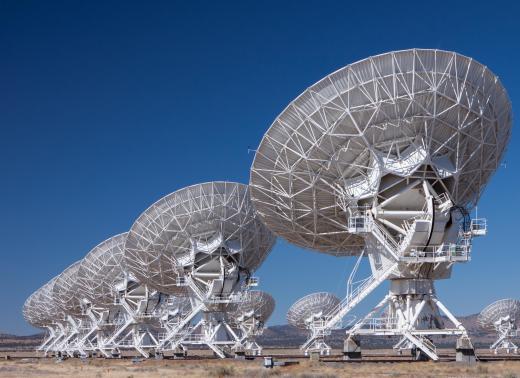What are the Different Types of Black Holes?
 Michael Anissimov
Michael Anissimov
Black holes are points in space with so much gravitational pull that not even light can escape from them. The "point of no going back" around a black hole is referred to as its event horizon. Black holes are formed either when a star greater than 20 solar masses collapses, or when the entire core of a galaxy collapses. Galaxy-collapse black holes release tremendous amounts of energy which can be observed from billions of light years away. This energy comes from the friction of infalling matter against itself — no radiation can emanate from the black hole itself.
Black holes are among the most intriguing astrophysical phenomena in the universe. They have captured the imagination of the public and dedicated study by many famous physicists, including Albert Einstein and Stephen Hawking. Black holes are interesting from the perspective of physicists because they can be characterized exhaustively by only three values: their mass, rotation, and charge. Slightly different theories are used to describe the behavior of black holes that are rotating vs. non-rotating, charged vs. neutral.

The biggest distinction among black holes is not their rotation or charge, but their mass. Known black holes cluster around two mass levels: the stellar mass black holes, ranging from 1.5 to 14 solar masses, and the supermassive black holes, with millions or billions of solar masses. Stellar black holes are created every time a star with more than 20 solar masses depletes all its nuclear fuel and collapses.

Supermassive black holes were likely formed billions of years ago, early in the universe's history, and remain around today. It is currently thought that every galaxy has a supermassive black hole in its center, and at least 30 are suspected to have been observed. Most astronomers believe that Sagittarius A*, a solar system-sized area containing 2.6 million solar masses, is the Milky Way's supermassive black hole.

There are two additional categories of black hole which may exist. The first is intermediate black holes, with masses somewhere between 14 solar masses and millions. Ultra-luminous X-ray sources, sustained sources of x-rays in other galaxies, are possibly intermediate mass black holes in the process of accreting matter. If these really are intermediate mass black holes, they have a mass in the neighborhood of a hundred thousand solar masses. Some astronomers have also observed an object near the center of our galaxy theorized to be an intermediate mass black hole with 1,300 solar masses.
The second type of unconfirmed black hole would be micro black-holes, which would either be created in particle accelerators or by the Big Bang. None have been observed yet, though some astrophysicists suspect they exist, and are designing telescopes to search for them
AS FEATURED ON:
AS FEATURED ON:













Discussion Comments
@supern0va – You have to have an interest in astronomy to understand the importance of black holes. It’s a fascinating subject with so many theories and unanswered questions.
Black hole formation is still fairly new to science so what it’s useful for may still be unknown other than the useful role it plays in forming galaxies and the universe.
That seems to be pretty significant to me.
Amazing..black holes are the wonders of the universe. Shame we can't take a picture of them since not even light can escape them..maybe someday we can observe them from a billion light years away with advanced telescopes and computer technology. However, developing technology that could be invested in other relevant astronomical matters would be better...how can black holes ever be useful to us?
Post your comments